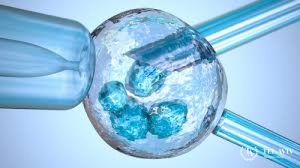When it comes to cryopreservation oocytes , refers to the freezing of eggs in order to preserve them for a long time, providing, at the same time, unchanged storage conditions. In other words, cryopreservation oocytes can be considered as a way to preserve fertility.
Why resort to cryopreservation oocytes ?
A woman can decide on cryopreservation oocytes for various reasons, for example: when it is necessary to carry out therapy that may cause problems with fertility or infertility (as happens, for example, in the case of chemotherapy, radiation therapy, etc.);
as a precaution in case you are prone to pathologies or are in conditions that may affect your fertility (early menopause); to preserve fertility and plan a pregnancy for personal reasons, with the intention of guaranteeing a higher probability of success in case of later difficulties with natural conception due to a physiological decrease in fertility.
How cryopreservation is carried out oocytes ?
Egg freezing and preservation is actually a step in a longer process that is divided into different phases. First of all, to carry out cryopreservation oocytes , it is necessary to contact a specialized center that performs this procedure, for example , MC " Bogolyubi " _ After the appointment, the patient will talk to a reproductive specialist , and during the consultation, the reasons that led to the need for egg cryopreservation will be taken into account .
In addition, in this context, the specialist will also assess whether this fertility preservation method is suitable for the woman. If cryopreservation is approved, the patient must undergo all necessary preliminary tests and examinations (such as, for example, evaluation of ovarian reserve, transvaginal ultrasound to evaluate the status of the ovaries and antral follicle count, tests to determine the presence of infections or other conditions that may make the procedure unsuitable. and etc.). Ovarian stimulation should then be performed by prescribing hormone therapy with ultrasound guidance to assess the number and size of follicles and the dosage of hormones. At the right moment, transvaginal surgical extraction of oocytes is performed under anesthesia. The selection of eggs lasts about 15 minutes.
After receiving, the oocytes are frozen in liquid nitrogen at a temperature of -196C. In the event that it was not possible to obtain the required number of eggs during the collection, it is possible to organize a second collection in agreement with the specialist. After the procedure, the patient will be under medical supervision for several hours, and then she can leave the center. Immediately after discharge, rest is recommended until the next day. In any case, the center will give precise instructions on how to behave after the procedure and in the following days.
When is it better to carry out cryopreservation oocytes ?
In general, due to the natural decline in the quality and quantity of oocytes over time, and to achieve the best results, it is advisable to start cryopreservation before the age of 35. However, this does not mean that at an older age it is no longer possible to resort to egg freezing. Nevertheless, women who decide to resort to conservative methods after the age of 35 should be aware that to obtain a sufficient number of oocytes they may need to be retrieved again, and if frozen eggs are used in the future for artificial insemination, the chances of success may be lower.
Are there risks?
The main risks of cryopreservation of oocytes may be associated with ovarian stimulation, followed by hormone therapy, anesthesia, and surgical oocyte collection. Such risks are considered minimal. However, before starting the procedure, it is advisable to talk to a specialist about all your fears. The patient must be informed about the possibility of facing the risks of developing unwanted effects of any kind. All risks must be assessed with a specialist on a case-by-case basis.



















